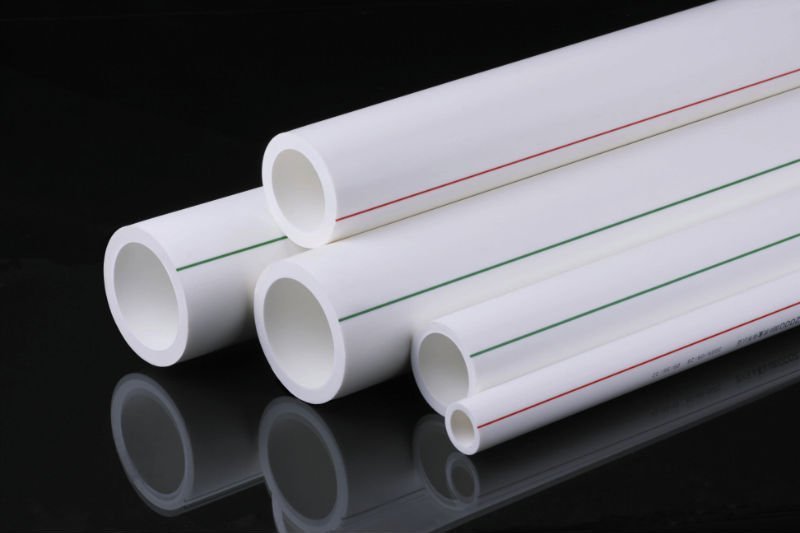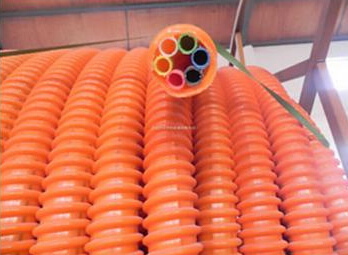Enhancing Network Performance: The Impact of Multi-hole Optical Tubes
Nov 13,2024
Enhancing Network Performance: The Impact of Multi-hole Optical Tubes
Table of Contents
- 1. Introduction to Multi-hole Optical Tubes
- 2. What Are Multi-hole Optical Tubes?
- 3. Benefits of Using Multi-hole Optical Tubes
- 4. Applications of Multi-hole Optical Tubes in Network Infrastructure
- 5. Impact on Network Performance
- 6. Installation and Maintenance Considerations
- 7. Future Trends in Optical Tube Technology
- 8. Conclusion
- 9. Frequently Asked Questions (FAQs)
1. Introduction to Multi-hole Optical Tubes
In the rapidly evolving landscape of telecommunications and electrical engineering, enhancing network performance is pivotal. As digital demands rise, the infrastructure supporting these networks must adapt and improve. **Multi-hole optical tubes** have emerged as a game-changer in this domain, offering innovative solutions for efficient data transmission. This article delves deep into the intricacies of multi-hole optical tubes, exploring their benefits, applications, and overall impact on network performance.
2. What Are Multi-hole Optical Tubes?
Multi-hole optical tubes are specialized conduits designed to house multiple optical fibers within a single, streamlined structure. These tubes consist of several holes or channels, each capable of accommodating an optical fiber, allowing for efficient organization and protection of the fibers. Made from high-quality materials, they are designed to enhance performance while ensuring durability and resistance to environmental factors.
2.1 Structure and Design
The design of multi-hole optical tubes typically includes a lightweight yet robust outer shell, providing mechanical protection. Inside, the separate channels are arranged to minimize interference and optimize signal quality. This innovative structure allows for easy installation and scalability, making it an attractive option for modern network applications.
3. Benefits of Using Multi-hole Optical Tubes
The adoption of multi-hole optical tubes presents numerous advantages that significantly enhance network performance:
3.1 Increased Fiber Density
By housing multiple fibers within a single tube, multi-hole optical tubes maximize space efficiency. This is particularly beneficial in environments where real estate is limited, allowing for higher fiber counts without requiring extensive additional infrastructure.
3.2 Enhanced Signal Integrity
The design of multi-hole optical tubes minimizes the potential for crosstalk and interference between fibers. As a result, networks experience improved signal integrity and reduced loss, crucial for maintaining high-speed data transmission.
3.3 Simplified Installation
Utilizing multi-hole optical tubes simplifies the installation process. With multiple fibers pre-installed in a single conduit, technicians can streamline their work, reducing labor costs and installation time significantly.
3.4 Cost-Effectiveness
While the initial investment in multi-hole optical tubes may be higher than traditional methods, the long-term savings in maintenance, installation, and operational efficiency make them a cost-effective solution for many organizations.
4. Applications of Multi-hole Optical Tubes in Network Infrastructure
The versatility of multi-hole optical tubes makes them suitable for various applications in network infrastructure:
4.1 Telecommunications Networks
In telecommunications, multi-hole optical tubes can support high-capacity networks, enabling service providers to deliver faster internet and data services to consumers while supporting future upgrades.
4.2 Data Centers
Data centers benefit greatly from the space-saving and organizational benefits of multi-hole optical tubes, allowing for more efficient management of fiber optics, which is critical for high-speed data processing and transfer.
4.3 Smart Cities
As cities become smarter, the demand for robust and efficient communication networks increases. Multi-hole optical tubes facilitate the massive data requirements of smart city applications, such as IoT devices and smart traffic management systems.
4.4 Industrial Automation
In industrial settings, the reliable performance of multi-hole optical tubes can enhance network communications critical to automation processes and real-time data reporting, thus improving overall efficiency and productivity.
5. Impact on Network Performance
The integration of multi-hole optical tubes into network infrastructure has profound implications for performance metrics:
5.1 Bandwidth Capabilities
Multi-hole optical tubes enable higher bandwidth capabilities due to the increased number of fibers that can be installed in a single conduit. This expansion is vital for accommodating growing data traffic demands.
5.2 Reduced Latency
With improved signal integrity and less interference, networks using multi-hole optical tubes can achieve lower latency, which enhances the performance of time-sensitive applications and services, like video conferencing and online gaming.
5.3 Scalability
The modular nature of multi-hole optical tubes allows networks to expand easily. As businesses grow, additional fibers can be added without the need for extensive renovations to the existing infrastructure.
6. Installation and Maintenance Considerations
Implementing multi-hole optical tubes involves careful planning and execution to maximize their benefits:
6.1 Installation Best Practices
To ensure optimal performance, it is essential to follow best practices during installation. This includes selecting the appropriate materials, adhering to industry standards, and ensuring that technicians are well-trained in handling multi-hole optical tubes.
6.2 Maintenance Protocols
Regular maintenance is crucial for sustaining the performance of multi-hole optical tubes. Implementing a proactive maintenance schedule can help identify potential issues early, ensuring that networks remain reliable and efficient.
7. Future Trends in Optical Tube Technology
As technology continues to advance, several trends are shaping the future of optical tube solutions:
7.1 Integration with Smart Technologies
The integration of multi-hole optical tubes with smart technologies, such as AI and machine learning, will further enhance network performance by enabling more efficient management and monitoring systems.
7.2 Environmental Sustainability
With rising concerns over sustainability, future optical tube designs are expected to focus more on eco-friendly materials and manufacturing processes, contributing to a lower carbon footprint while maintaining high performance standards.
7.3 5G and Beyond
As the demand for 5G networks and beyond continues to grow, multi-hole optical tubes will play a crucial role in supporting the infrastructure needed for faster and more reliable wireless communication.
8. Conclusion
In conclusion, multi-hole optical tubes represent a significant advancement in network technology, offering numerous benefits that enhance performance, scalability, and cost-effectiveness. As networks evolve to meet the increasing demands for speed and reliability, these innovative solutions will be at the forefront of telecommunications and electrical engineering. Embracing multi-hole optical tubes is a smart choice for businesses looking to future-proof their network infrastructure while optimizing performance.
9. Frequently Asked Questions (FAQs)
Q1: What are the key advantages of multi-hole optical tubes over traditional solutions?
A1: Multi-hole optical tubes offer increased fiber density, enhanced signal integrity, simplified installation, and cost-effectiveness while reducing crosstalk and interference.
Q2: Can multi-hole optical tubes support 5G networks?
A2: Yes, multi-hole optical tubes are well-suited to support the infrastructure needed for 5G networks, allowing for high-capacity data transmission and reliable connectivity.
Q3: What materials are used in the construction of multi-hole optical tubes?
A3: Multi-hole optical tubes are typically made from durable, lightweight materials such as polyethylene or PVC, designed to withstand environmental stresses while protecting the enclosed fibers.
Q4: How do I maintain multi-hole optical tubes?
A4: Regular inspections, cleaning, and adherence to best practices during installations are essential for maintaining the integrity and performance of multi-hole optical tubes.
Q5: Are multi-hole optical tubes suitable for use in industrial environments?
A5: Yes, multi-hole optical tubes are ideal for industrial applications due to their robust construction and ability to efficiently manage multiple fibers in demanding environments.
Latest News







